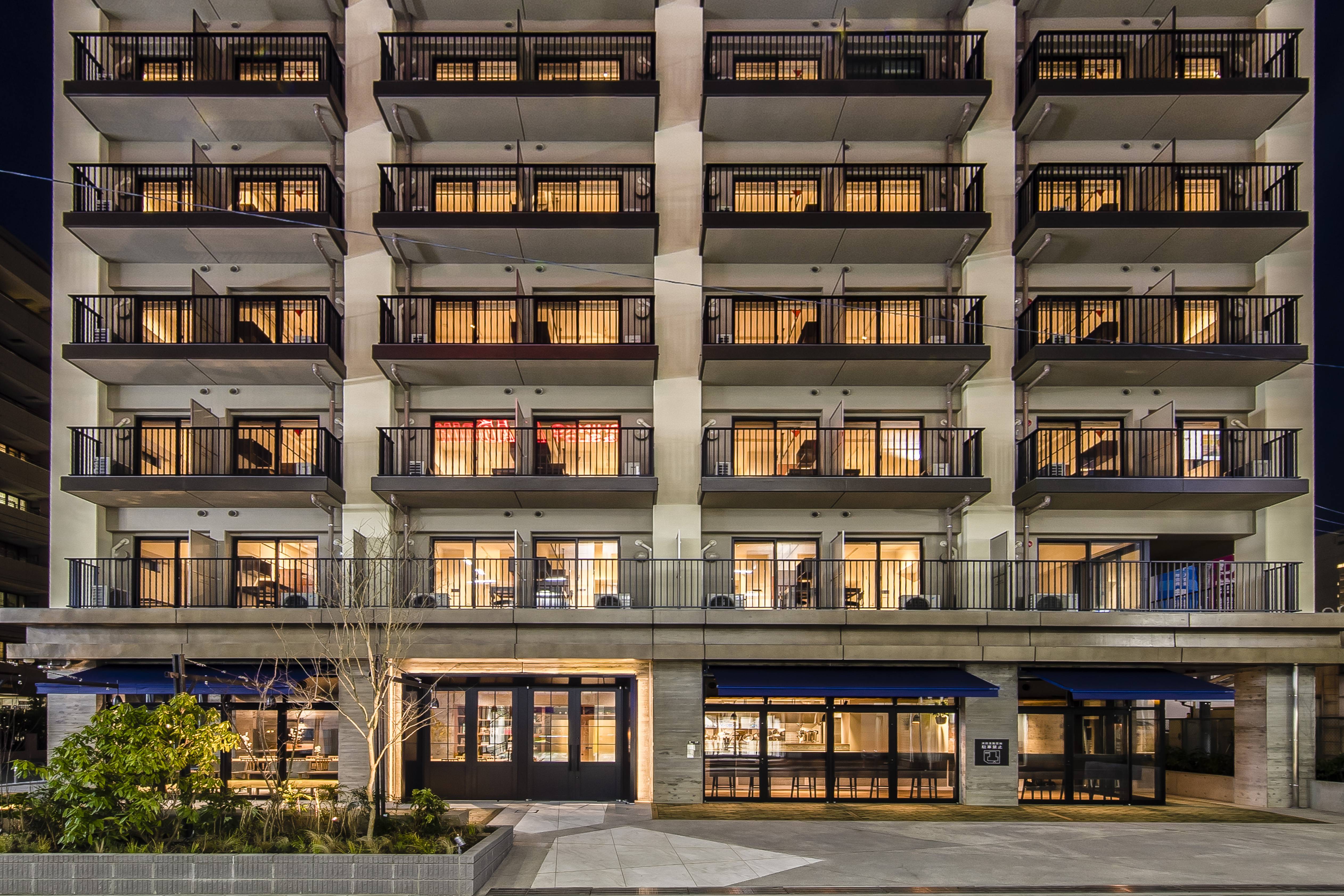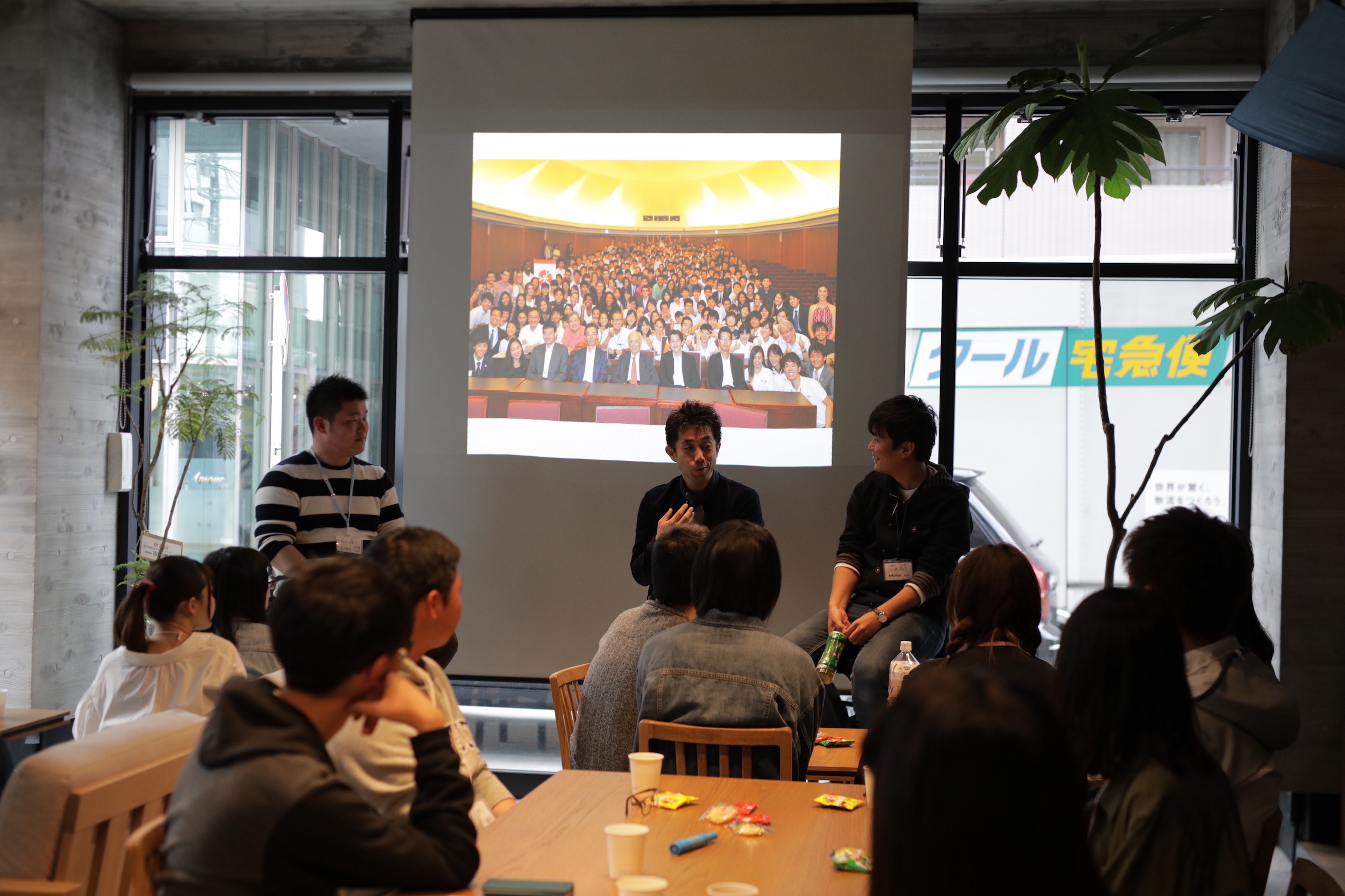Introducing Node Growth Shonandai, a new student residence at Shonandai
Almost every student who is enrolled at SFC has been through the experience of finding housing. Keio University offers limited options for its students when it comes to dormitories; in addition, they are mainly located in Yokohama or Kawasaki, limiting their appeal to SFC students with a one-way commute of at least 70 minutes, which can be extremely tiring over the course of a semester. Node Growth Shonandai is a student dormitory that is not only located right at Shonandai Station, but provide one-of-a-kind opportunities to international students.
General feature of student accommodation
You need a guarantor to rent a place
When signing a contract, a guarantor is usually required to act as an insurance in case of payment troubles. Most of the time the guarantor needs to be Japanese and reside in Japan; this regulation can be difficult to follow for international students.
Another option is to find a guarantor company, which is very convenient if you do not know anyone in Japan prior to your arrival. Keio University can act as your guarantor too. Please check the requirements on the Gakuji Website.
Strict regulations
It is common for student dormitories to have a curfew where residents are not able to enter or leave after a certain time. This can be impractical for students who may wish to stay late at school for meetings or study.
Additionally, meeting and study rooms in a dormitory are generally only usable by residents. If anyone wishes to invite visitors from outside, they usually will need to submit a notification to the resident manager a few days in advance and may be limited by time.
Considerations when choosing a place to live
Location
The location is arguably the most important aspect of choosing a place to live. It should be close to a train station because while most of the trains still run after midnight, buses stop operating after 23:00. It is very convenient to live near supermarkets or restaurants so you won’t need to spend a lot of time traveling simply to buy your daily necessities.
It is also a good idea to choose accommodation which is located near SFC. The long commutes can be tiring especially if you have morning classes or early morning training.
Room Type
Usually, there are two types of rooms: shared and private. Private rooms are equipped with a private shower and a toilet; some may even have their own kitchen or other appliances like a washing machine. Shared room accomodations usually have a shared bathroom and kitchen used by all residents.
Communal Facilities
In addition to room type, many students state that communal facilities should be taken into consideration, too. You should look at the various communal spaces, overall cleanliness, and added convenience to your daily life.
Meal Plan
Some dormitories also provide meals. They serve breakfast and dinner during assigned times and meal plans are often offered as an additional contract option.
Community
University life is much more than going to campus, taking classes, and preparing for exams. The people you live with matter, too! Some dormitories will encourage community activities, while others do not.
About Node Growth Shonandai, a new dormitory near Shonandai Station
The Node Growth Shonandai Student Residence was opened in March 2018. UDS Ltd., a design company owned by Odakyu Electric Railway Co., Ltd., collaborated with startup HLAB to introduce a new kind of living space for university students. Keio University is going to be a part of this collaboration, too. Node Growth aims to provide a comfortable living space and convenient location (one minute from Shonandai Station) while providing opportunities for residents to interact, study, and have fun outside of their university. Their main goal is to differentiate themselves from the traditional image of student accommodations and offer a stimulating living environment for students.
 Node Growth Shonandai from the front. Image courtesy UDS Ltd and HLAB
Node Growth Shonandai from the front. Image courtesy UDS Ltd and HLAB
Non-conventional concepts
There are many aspects of Node Growth which are different in comparison to the conventional student dormitory.
Node Growth’s cafeteria, Relax Shokudo Shonandai, can be found on the first floor. The cafeteria also functions as a shared lounge for the residents, and it is also open for visitors who can enjoy the cafeteria during lunch and dinner time without needing to fill in a notification form. Residents are served breakfast between 7:00 and 9:30 and dinner between 18:30 and 21:30. The cafeteria is equipped with a projector, speakers, power outlets, Wi-Fi, and two booths with screens that can be connected to a computer and used for presentations or groupwork.
 Relax Shokudo. Image courtesy UDS Ltd and HLAB
Relax Shokudo. Image courtesy UDS Ltd and HLAB
There is no curfew at Node Growth, so residents have the freedom to come and go at any time. Resident assistants hold special roles within the community, helping new residents settle in and promoting events such as rooftop barbecues, birthday celebrations, and orientation events. They also help run joint events in collaboration with universities and local businesses.
 Orientation Event. Image courtesy UDS Ltd and HLAB
Orientation Event. Image courtesy UDS Ltd and HLAB
Node Growth focuses on establishing an extraordinary community where people can learn from each other, provide a setting for self-discovery, and find opportunities to make new friends, things which may prove difficult, particularly for international students. In this way, Node Growth offers a living experience which other dormitories usually do not.
Access
Node Growth Shonandai is located at:
1-3-1 Shonandai
Fujisawa City
Kanagawa Prefecture
〒252-0804
It takes a one minute walk from the east exit of Shonandai Station. The location is also very convenient as the dormitory is surrounded by supermarkets, fast food restaurants, and coffee shops.
Residents can take the bus from the west side of Shonandai Station to go to SFC, which takes approximately 15 minutes.